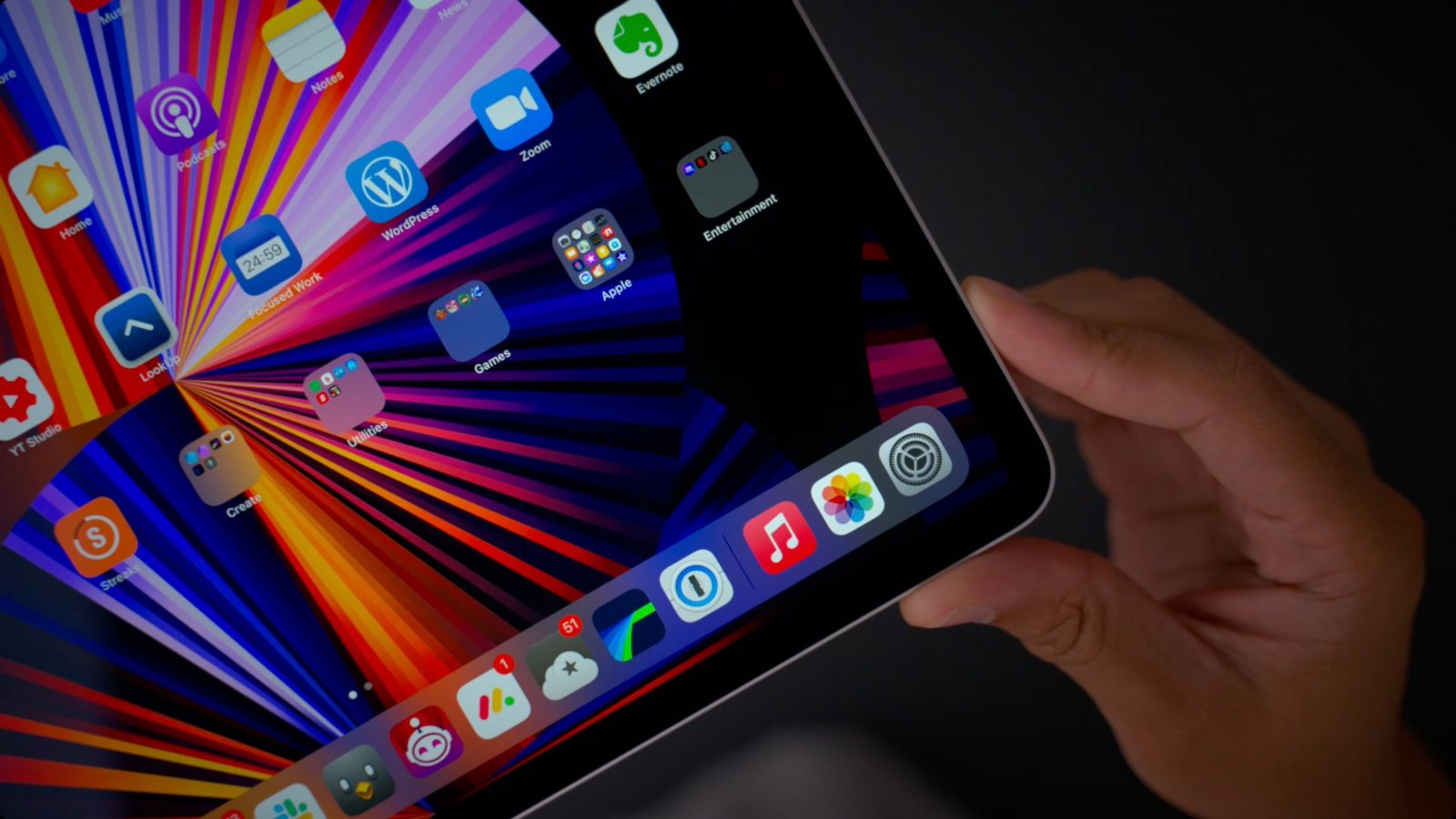
A new report from ETNews claims that Apple will adopt OLED displays in some iPad models, which has actually already been rumored by reliable analyst Ming-Chi Kuo. While this may seem unlikely considering Apple’s current efforts to push mini-LED in the iPad Pro, the rumors may not be wrong.
Earlier this year, Ming-Chi Kuo said that Apple was working with both Mini-LED and OLED displays for its future iPads. Part of his prediction has become true with the M1 iPad Pro, which comes with a Mini-LED display in its 12.9-inch version.
Meanwhile, we still have no OLED iPad models, but now more sources have “confirmed” that the company is still working on new versions of its tablet with this display technology. But if the company invested in Mini-LED for the iPad Pro instead of adopting OLED, why would it use OLED in other iPad models?
Well, as unlikely as that may sound, perhaps there could be a good reason for Apple to use OLED in other iPads — and that reason might be Micro-LED. But first, let me explain some basic differences between these display technologies: OLED, Mini-LED, and Micro-LED.
Display technologies
Unlike LCD, OLED displays don’t have a backlight since each pixel emits its own light. As a result, OLED provides deeper blacks since the brightness levels are adjusted individually for each pixel, which results in higher contrast ratios. The downside is that OLED is more susceptible to burn-in issues, and brightness levels are usually lower than regular LEDs.
Mini-LED comes as an alternative to OLED, which is better in some ways and worse in others. Mini-LED screens are made up of thousands of small LEDs arranged in multiple dimming zones. For instance, the 12.9-inch M1 iPad Pro display has more than 10,000 LEDs in 2,500 dimming zones.
Brightness is higher than on an OLED display and blacks are deeper than on a regular LCD panel, not to mention that Mini-LED doesn’t suffer from burn-in, but local dimming is still not as accurate as on OLED — as you can see in the image below. That’s because 10,000 LEDs aren’t going to offer the same accuracy as having millions of pixels being controlled individually.

And then there’s the Micro-LED, which is also a new technology that works in a similar way to the Mini-LED, but it has one microscope LED for each pixel in the display. In other words, the results achieved by Micro-LED are basically the same as OLED, but with improved brightness and no burn-in.
Entry-level iPad models with OLED
Based on what previous rumors said, Apple didn’t want to bring OLED to the iPad Pro because of burn-in. It’s true that iPhones already have great OLED display, but they are smaller and you probably don’t spend hours in a row using the same app on your phone. However, there are people who use iPad Pro for long periods of time, so having an OLED display could result in a burn-in nightmare.
Brightness is another important aspect to consider. Thanks to Mini-LED, the iPad Pro display can now reach 1,000 nits of maximum brightness in full screen and even peak at up to 1,600 nits with HDR content. For comparison, the OLED display on the iPhone 12 Pro only reaches 800 nits with a peak of up to 1,200 for HDR content.
For professionals working with HDR photo and video editing, using the 12.9-inch M1 iPad Pro with Mini-LED display is like having a small version of Apple’s Pro Display XDR. But while Mini-LED is great, it has some flaws (such as the “blooming” effect), and I have no doubt that Apple will replace it with Micro-LED when that technology becomes more affordable.
I see the Mini-LED as a transitional technology. It’s better than OLED in some ways for what professionals need, but it’s not something that will be around for long — which is why we shouldn’t worry about it. OLED, on the other hand, is becoming more and more popular. And while it doesn’t have terrific brightness, OLED might be the perfect display to bring deeper blacks to cheaper iPads in the future.
Wrap-up
OLED may seem more interesting than Mini-LED for having precise local dimming, but this will no longer be the case once Micro-LED technology is here. So what I imagine for future iPad models is the iPad Pro with Micro-LED display and iPad Air (and presumably the entry model iPad) with OLED displays, which at this point are already cheaper than current Mini-LED panels.
It’s even worth mentioning that a 2019 report claims that Apple also plans to bring Micro-LED to the iPhone, which reinforces the idea of Micro-LED being the ultimate option for premium devices in a few years.
What do you think about all these rumors? Let me know in the comments below.
FTC: We use income earning auto affiliate links. More.





Comments